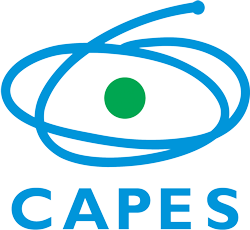July 24th to August 4th, 2017
Some useful information about Brazil
Language and culture
The official language of the Advanced School is English and most people at the University have some knowledge of it. However, the language ordinarily spoken in Brazil is Portuguese and, in the city at large, you may find difficulties with English alone (but people do try very hard to help!). If you speak Spanish, you may be able to communicate without too much effort, since Spanish and Portuguese share a common root.
São Paulo is a very large city and, accordingly, some regions are not entirely safe to wander about, specially for tourists. In most other places, acts of direct violence are unlikely, but you may be mugged if you show off your cash or electronic equipment (such as laptops or cameras) or leave it unattended (even inside the University!). Other than that, people are very receptive to foreigners.
Geography
The timezone in São Paulo (BRT) is UTC-3; the Advanced School will take place during Winter, so there will not be daylight saving time adjustments to make. Expect temperatures from 8-12 to 20-24 degrees Celsius.
The Advanced School will be held at the Biblioteca Brasiliana Guita e José Mindlin, inside the University of São Paulo campus. The University is somewhat distant from the more central and touristic regions of the city. Public transportation is OK, specially if you avoid the rush hours. Most taxis take credit cards, but not all, so it is best to have some cash ready. For buses, you may pay for your ticket inside the bus (with cash, using small bills!); for the subway, it is better to buy a “multiple” ticket, valid for several trips, as lines to buy tickets are usually long.
Access to/from the Airport
In all likelyhood, you will arrive at GRU Airport, which is somewhat distant from the city (like Charles de Gaulle in Paris or Washington Dulles in Washington). The easiest way to get from Guarulhos International Airport to the city and back is to use the airport bus service. Buses leave often and can take you to the city center (Av. Paulista) or to subway station República, on the Yellow line of the subway (map). As of March 2017, tickets cost R$ 48,80 and can be bought at the airport. It is much cheaper than taking a taxi and it is also a very comfortable option.
For taxis, head to the Guarucoop stand inside the airport. Expect to pay a fixed fare of R$ 120 to R$ 150. Driving time is 50 minutes, much more at rush hour. When travelling to the airport (as it is located in Guarulhos city), São Paulo city taxi firms charge an extra 50% fee. To avoid this, book with Guarucoop or a taxi/ride company (EasyTaxi, 99Taxis, Uber, Cabify…).
In case you arrive at CGH Airport, things are simpler: the airport is located within the metropolitan area and is well served by buses, taxis etc. It is not close to the University, however.
Banking and Money
The currency in Brazil is the “Real”, which corresponds to about 1/3 of an american Dollar. Foreign currency is not accepted; you may exchange foreign currencies at designated exchange houses, but presenting your passport is mandatory. If you do so, it is best to stick to american Dollars or Euros.
Visa and Mastercard are well accepted in Brazil; American Express has less coverage but is also accepted in many places. If you intend to withdraw money from an ATM, be aware that some cashing services are not available in all Brazilian ATM machines. Most of the “24 Horas” ATM machines (red color) located in supermarkets and shopping centers accept a large variety of international cashing cards, as well as some international banks such as HSBC and Citibank. Banking hours in the city of São Paulo are between 10am and 4pm.
Electricity and telephony
The country code for Brazil is 55; the area code for São Paulo is 11. To call a phone number in the same city you are in, just dial the number; to call a different city, you need to dial zero, a carrier code, the area code and the phone number. To call abroad, you need to dial two zeroes, a carrier code, the country code and the rest of the number (with or without an area code, depending on the country’s telephony rules).
The carrier code is used to identify the long distance telephone company you prefer to use for that call. Usually, it is a good idea to use as the carrier the company that provides you with your local number.
Brazil uses both 110V and 220V depending on the region (always at 60Hz). In São Paulo, most outlets are 110V. If your device uses the Europlug (not to be confused with the Schuko and variations), i.e., it has two 4mm round pins and no ground connector, it will work anywhere in Brazil (as long as the voltage is compatible, of course). In all other cases, you will need an adapter. For north-american plugs, they are not hard to find; others may be found at the airport.
Driving License
According to the Brazilian driving license rule issued in 2006, the foreign driving license from a country signatory of the Vienna convention is valid for 180 days from the date of the visitor arrival. Therefore, we recommend the visitor to apply for an International Driver’s License (also called International Driving Permit) in your home country. Normally, this license is valid for the same period of the foreign driving license and it is written in several languages. Both documents must be carried together because the police official honors the driving license, not the permit alone.







